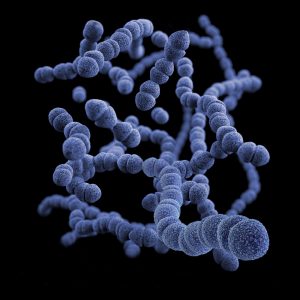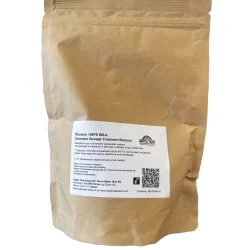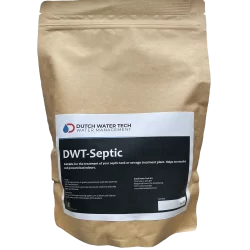Home » Knowledge base » Septic Tank Bacteria Aerobic
Septic Tank Bacteria Aerobic
Septic tank bacteria. The driving force behind the degradation of wastewater.
Bacteria are the driving force behind a properly functioning septic tank. The bacteria take care of breaking down the waste products in the water. In the septic tank conditions are created that allow these micro-organisms to break down the organic waste as good as possible. The stagnant water makes the waste products sink to the bottom of the tank and create a layer of sludge. The micro-organisms (bacteria) then get to work processing and breaking down the sludge. Two bacteria can thrive in this process, but this depends on the supply of oxygen.
Bacteria for wastewater treatment
Here we can distinguish two types of bacteria:
- Anaerobic bacteria: These are bacteria that do not require oxygen to break down the sludge layer in the septic tank.
- Aerobic bacteria: These are bacteria that do require oxygen to break down the sludge layer in the septic tank. An additional advantage is that no foul odours are released during the breakdown by this type of bacteria. In addition, unlike anaerobic bacteria, no dangerous gases are released.

Tips for optimal water purification by bacteria
A properly functioning septic tank does not need to be emptied very often. For a septic tank to function optimally, its bacterial metabolism must be optimal. Unfortunately we see that this is often disturbed and therefore the septic tank does not always function optimally. This is often due to the use of aggressive cleaning products that disturb the bacteriological household. This causes the bacteria in the septic tank to work less efficiently, which results in blockages and especially odors
Our recommended products for your septic tank
-
Roetech 106PS WS-8 – Domestic Sewage Treatment Bacteria
Domestic sewage treatment system £47.95 £39.96 (excl. VAT) Add to basket -
DWT-Septic Plus – Septic Tank Bacteria – 1kg
Cesspool Bacteria Treatment £57.45 £47.88 (excl. VAT) Add to basket -
Roebic K37 Septic Tank Treatment | Concentrated Formula
Septic tank bacteria £27.95 £23.29 (excl. VAT) Add to basket -
DWT-Septic – Septic Tank Additives – 1kg
Cesspool Bacteria Treatment £46.95 £39.13 (excl. VAT) Add to basket





